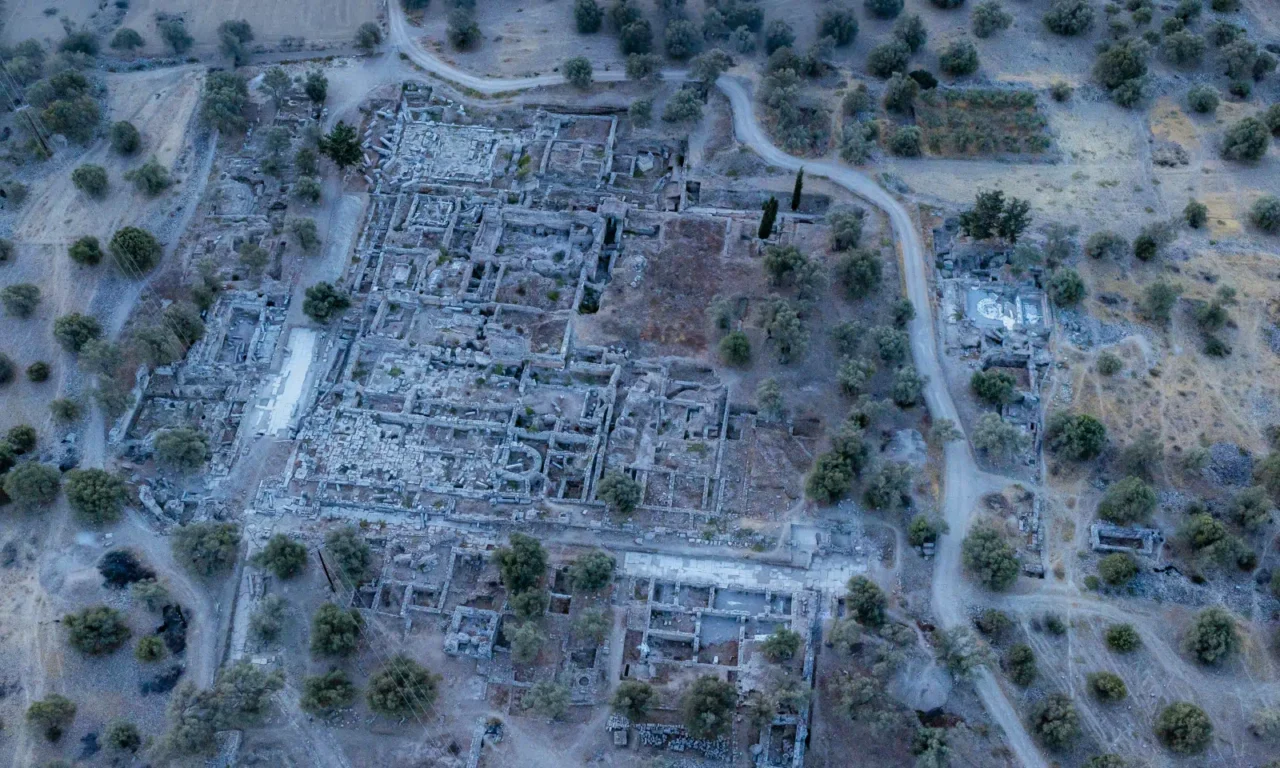
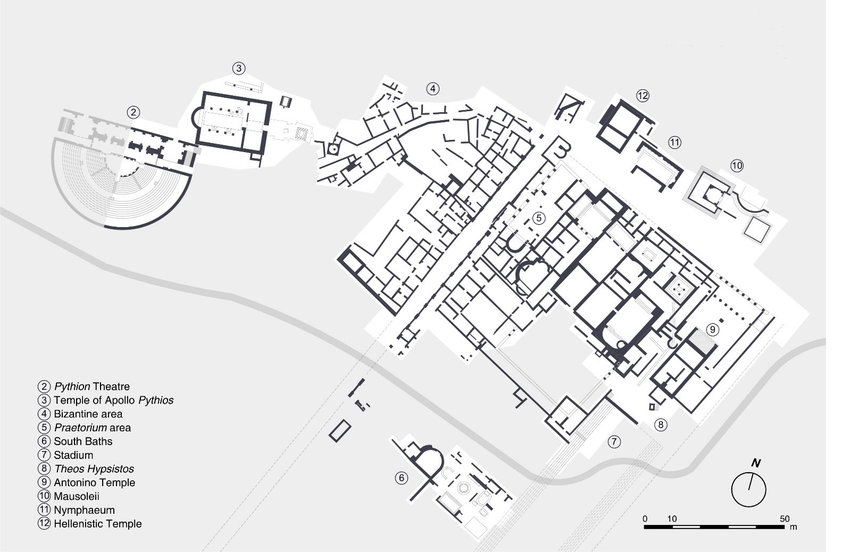
The Heart of Roman Administration
The Praetorium in Gortyna, Crete, was a monumental complex that served as the administrative and judicial center of the Roman province of Crete and Cyrenaica. The complex underwent several transformations throughout its history, reflecting the evolving needs of the Roman administration and the city’s changing urban landscape.
Location and Context
The Praetorium was situated in the heart of Gortyna, close to the baths of the Pythion sanctuary and north of the northern plateia, the main thoroughfare of the city. Its central location underscored its importance as the seat of Roman power and authority. The complex’s proximity to the Pythion sanctuary also suggests a deliberate connection between the secular and religious spheres of Roman Gortyna.
The Early Phases: A Gymnasium and More
The earliest phase of the Praetorium, dating to the late Hellenistic or early Roman period, is believed to have been a gymnasium or a similar public building. This structure was completely transformed in the 2nd century AD into a grand bath complex, reflecting the Roman penchant for luxurious bathing facilities.
The Roman Baths: A Monumental Transformation
The Roman baths at the Praetorium were a testament to the city’s prosperity and the Roman administration’s desire to showcase its power and influence. The complex featured hot and cold rooms, a large latrine, a triangular area possibly used for cult activities, and a basilica thermarum, a grand hall for social gatherings and relaxation. The baths served as a vital social and cultural hub, fostering interaction and reinforcing Roman identity within the provincial capital.
Late Antique Adaptation: The Rise of the Praetorium
In the 4th century AD, the basilica thermarum was repurposed into the Praetorium, the administrative and judicial headquarters of the Roman governor. This transformation reflects the changing priorities of the Late Roman Empire, with a greater emphasis on administrative efficiency and centralized control.
The Praetorium continued to function as the seat of Roman power until the 7th century AD. During this period, the complex underwent several renovations and modifications, adapting to the evolving needs of the administration and the city’s changing urban fabric.
Archaeological Investigations
Archaeological excavations at the Praetorium have revealed a wealth of information about its history and function. The remains of the Roman baths, with their hypocaust system, mosaics, and other decorative elements, provide insights into the luxurious lifestyle of Roman Gortyna. The later adaptations of the complex, including the transformation of the basilica thermarum into the Praetorium, shed light on the evolving administrative structures of the Late Roman Empire.
Key Features
- Roman Baths: The well-preserved remains of the Roman baths, including the caldarium, frigidarium, and tepidarium, showcase the grandeur and sophistication of these public facilities.
- Basilica Thermarum: The grand hall, later converted into the Praetorium, served as a social and cultural center within the bath complex.
- Praetorium: The administrative and judicial headquarters of the Roman governor, reflecting Gortyna’s importance as the provincial capital.
- Late Antique Adaptations: The complex underwent several modifications in the Late Antique period, including the addition of workshops and other structures, reflecting the changing needs of the community.
The Praetorium’s Legacy
The Praetorium stands as a powerful symbol of Roman rule in Crete. Its transformation from a luxurious bath complex to the seat of provincial administration reflects the changing priorities and challenges of the Late Roman Empire. The Praetorium’s legacy is one of power, authority, and adaptation, showcasing the enduring impact of Roman rule on the city of Gortyna and the island of Crete.
Archaeological Site: Key Points
- Construction Period: 1st century AD to 7th century AD
- Location: Central Gortyna, near the baths of the Pythion sanctuary
- Dimensions: The complex covers a vast area, estimated to be over 5000 square meters
- Historical Significance: Served as the administrative and judicial center of the Roman province of Crete and Cyrenaica, reflecting Gortyna’s importance as the provincial capital
- Current Status: The Praetorium is an actively excavated area within the archaeological site of Gortyna, with ongoing research providing new insights into its history and function
References
- Caliò, Luigi Maria. 2013. “Gortys. Archaeological excavations of new mausoleums in the Praetorium area.” In Archaeological Work in Crete 3, edited by Pavlina Karanastasi, Anastasia Tzigounaki, and Christina Tsigonaki, 537-552. Rethymno: Faculty of Letters Publications, University of Crete & Ephorate of Antiquities of Rethymnon.
- Lippolis, Enzo. 2012. “Gortys of Crete: The Excavations in the Nymphaeum Block.” In Archaeological Work in Crete 2, edited by Michalis Andrianakis, Petroula Varthalitou, and Iris Tzachili, 246-260. Rethymno: Faculty of Letters Publications, University of Crete.
- Lippolis, Enzo. 2016. “Roman Gortyn: from Greek polis to provincial capital.” In Roman Crete: New Perspectives, edited by Jane E. Francis and Anna Kouremenos, 155-174. Oxford & Philadelphia: Oxbow Books.
Site Info
Access
The site is fenced but you can walk around.














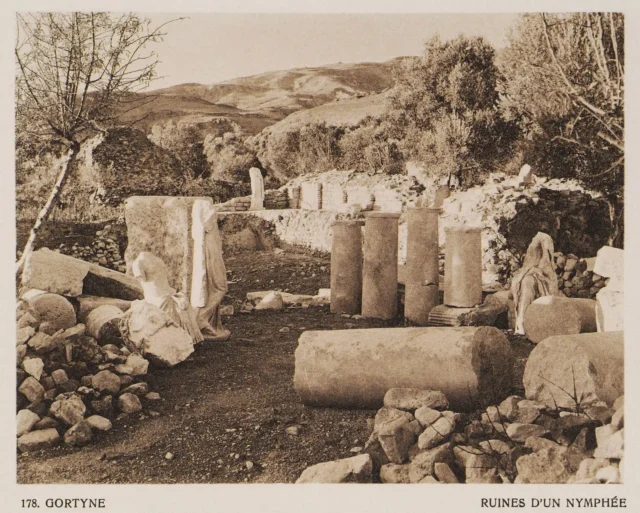

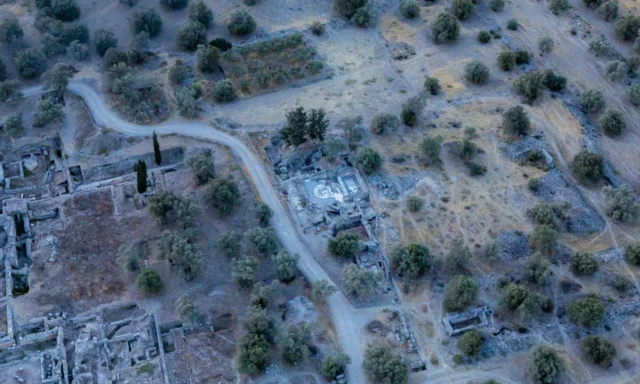

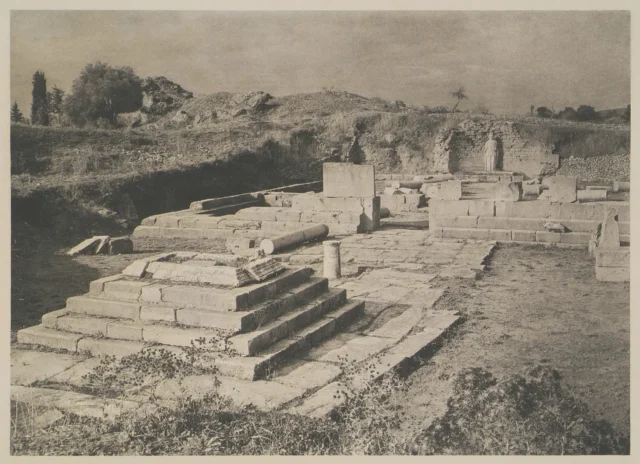

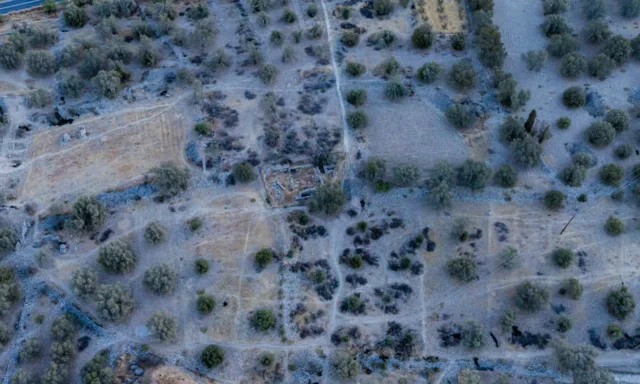
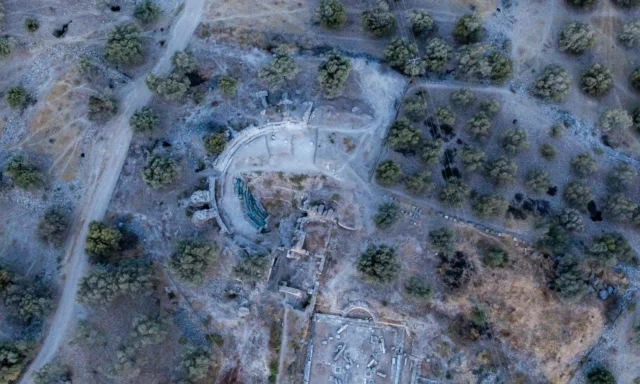

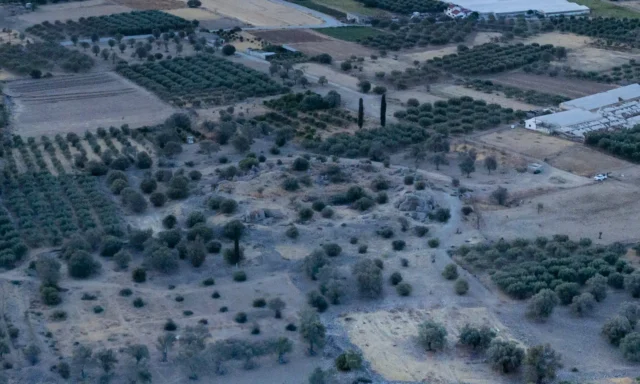


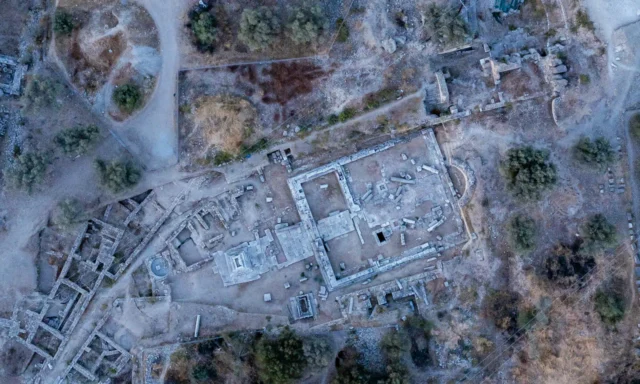
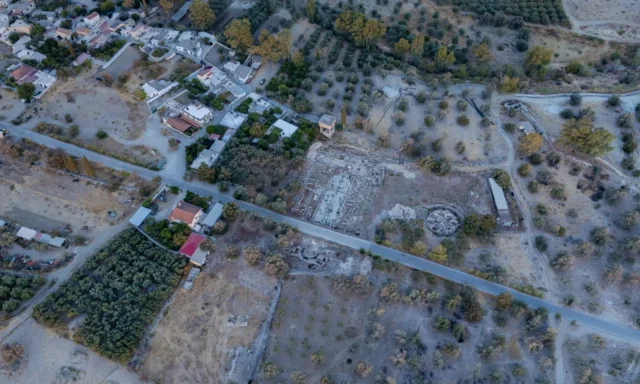
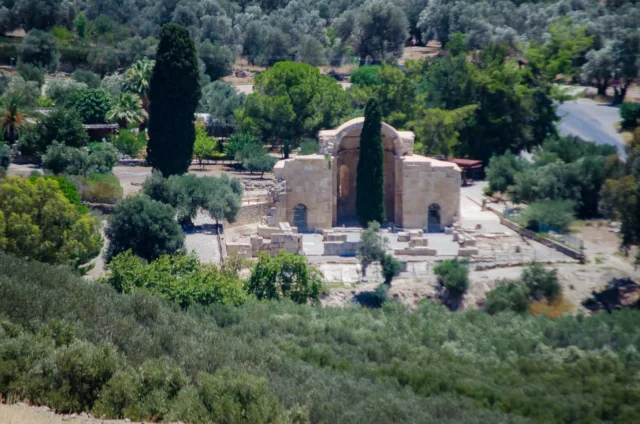
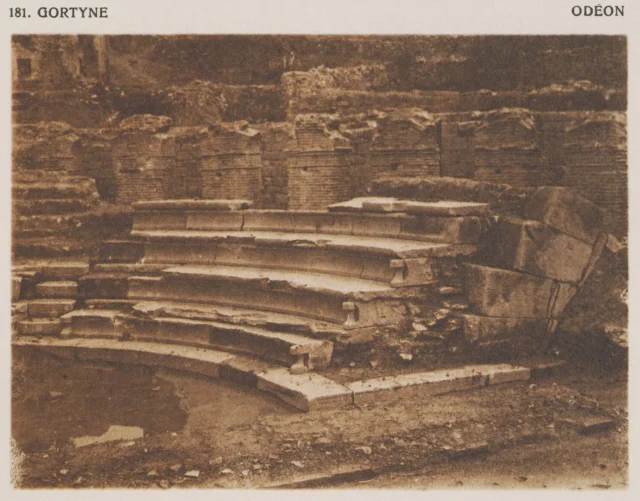
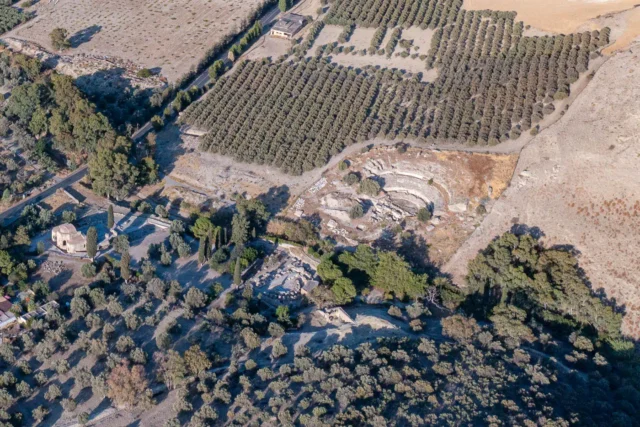
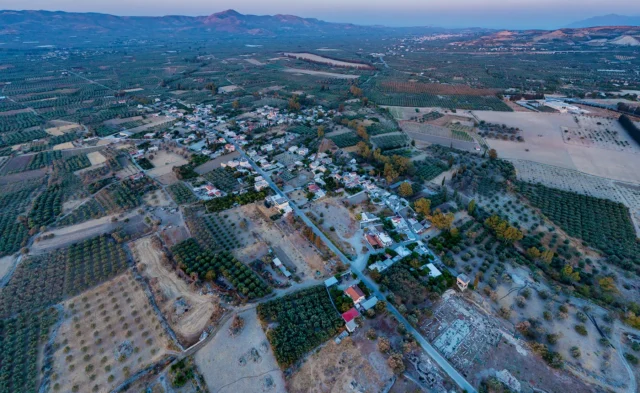

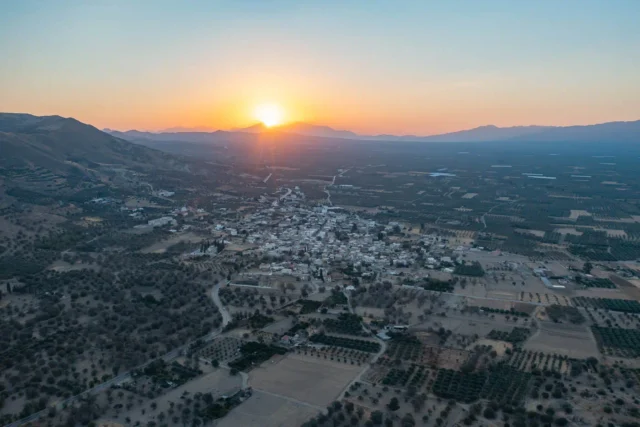

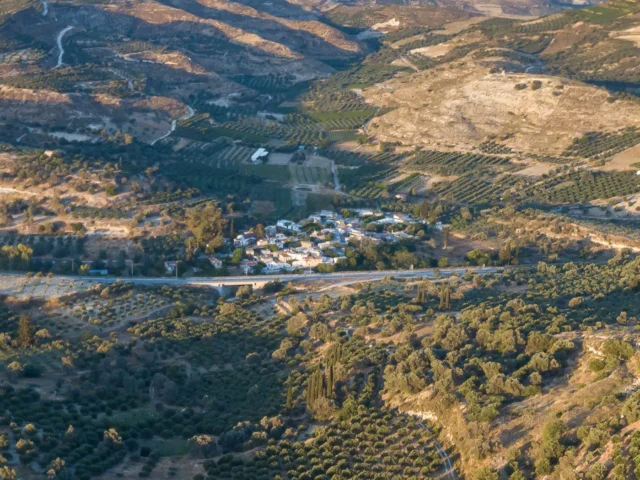
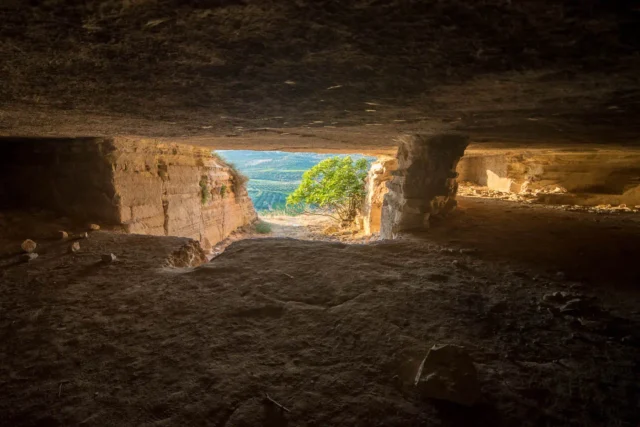

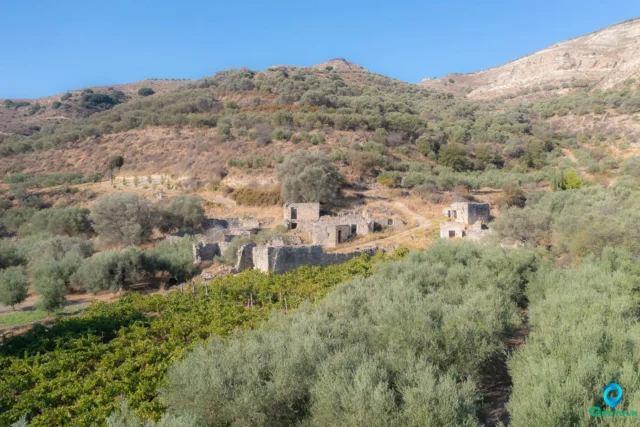

There are no comments yet.